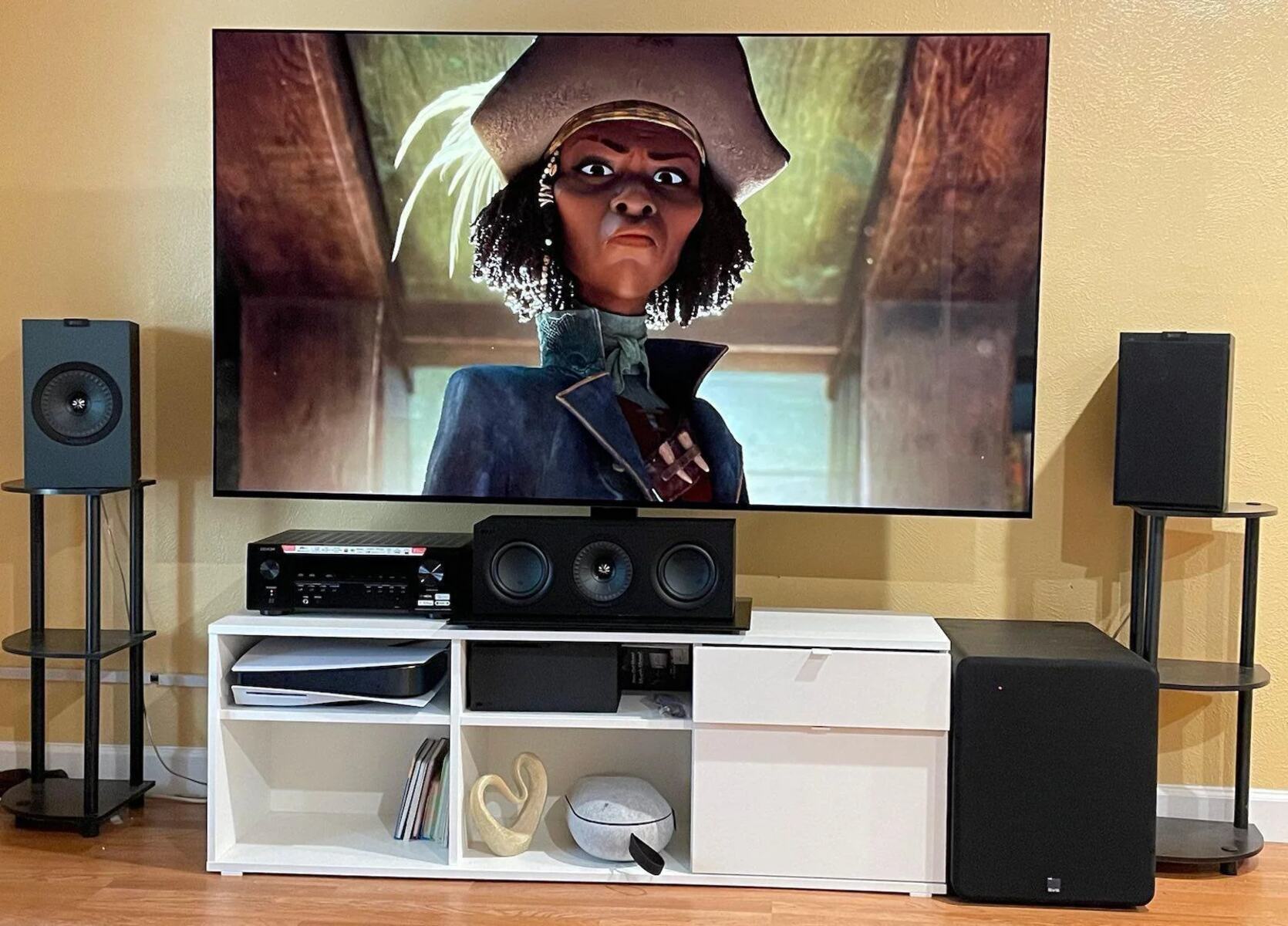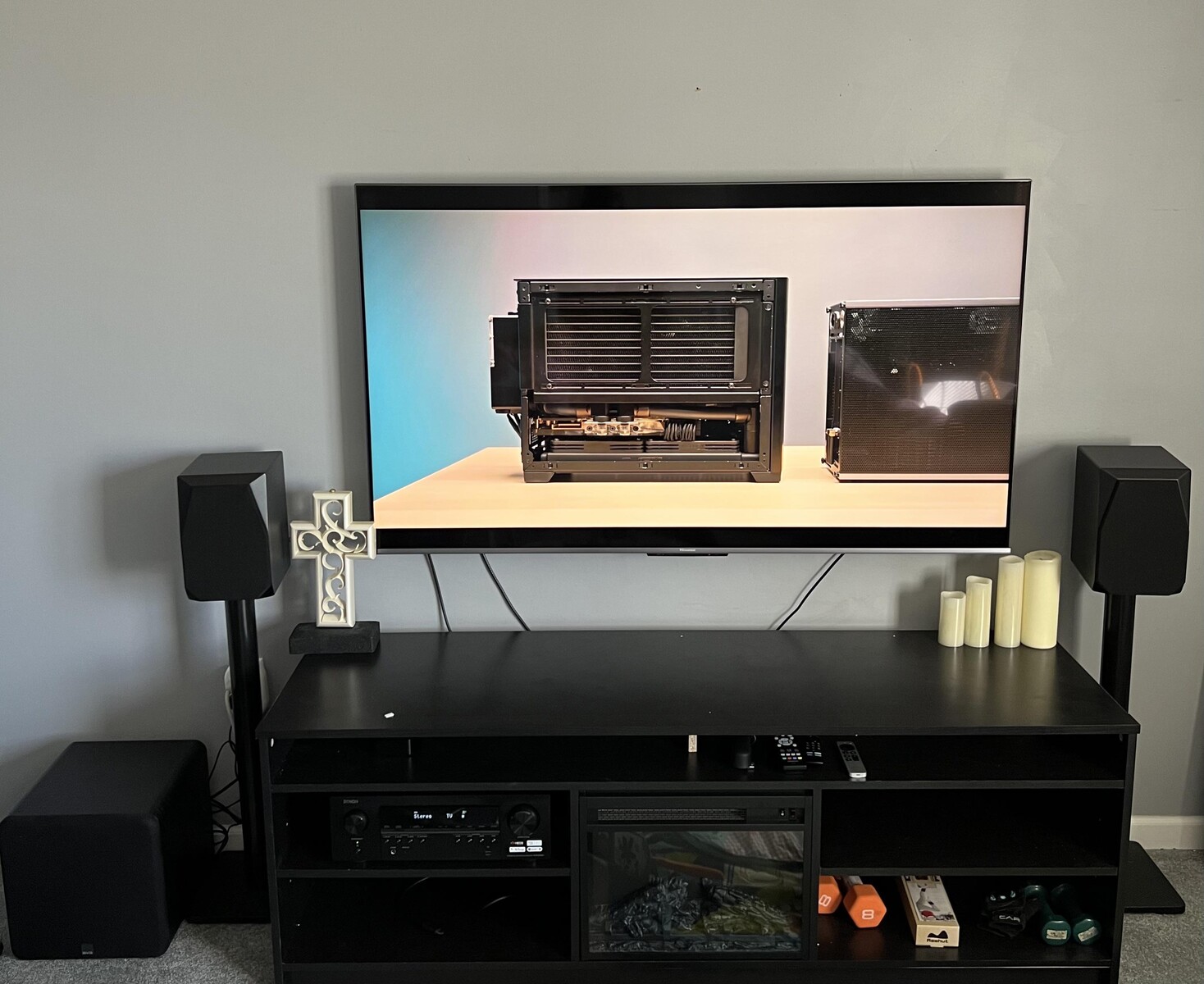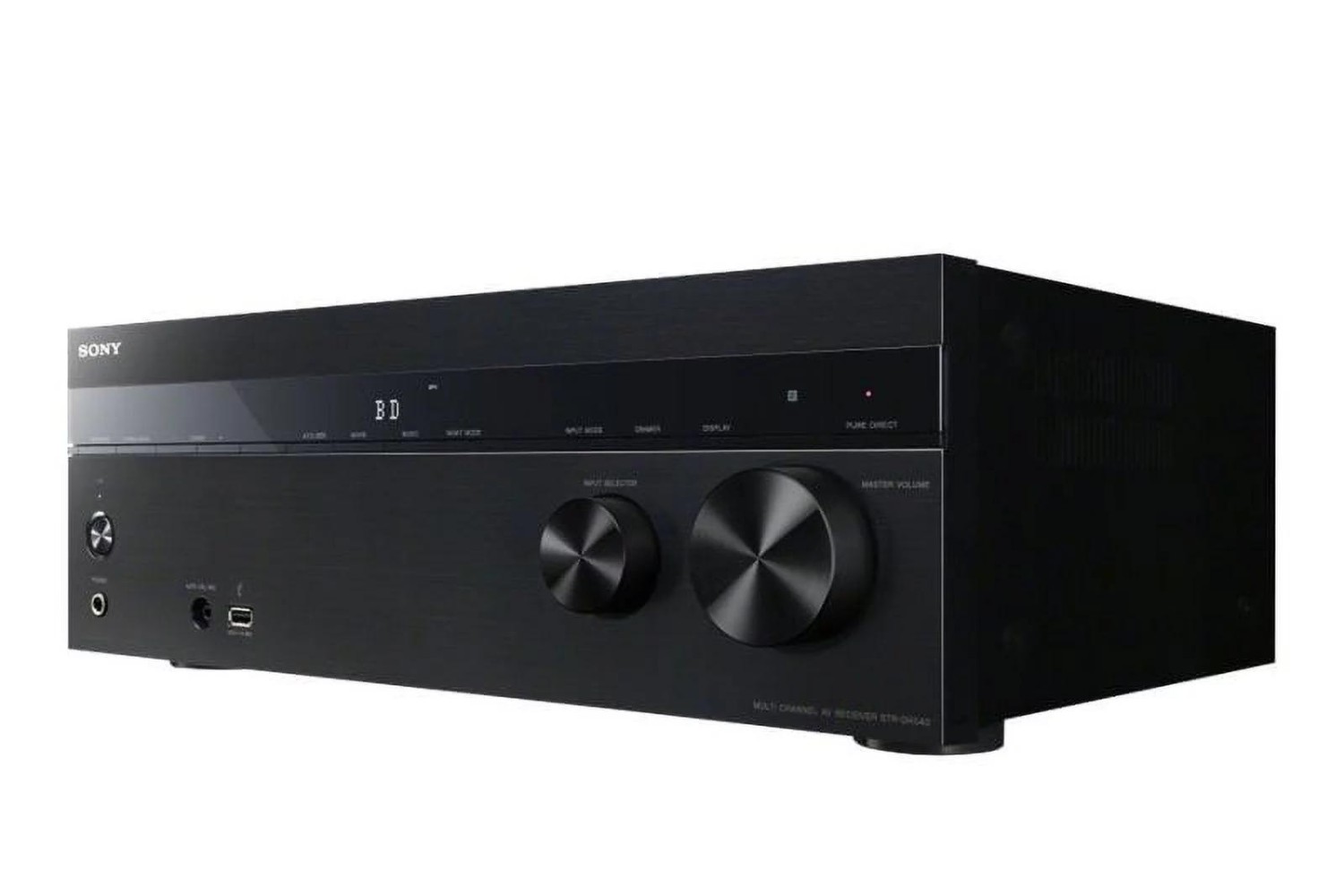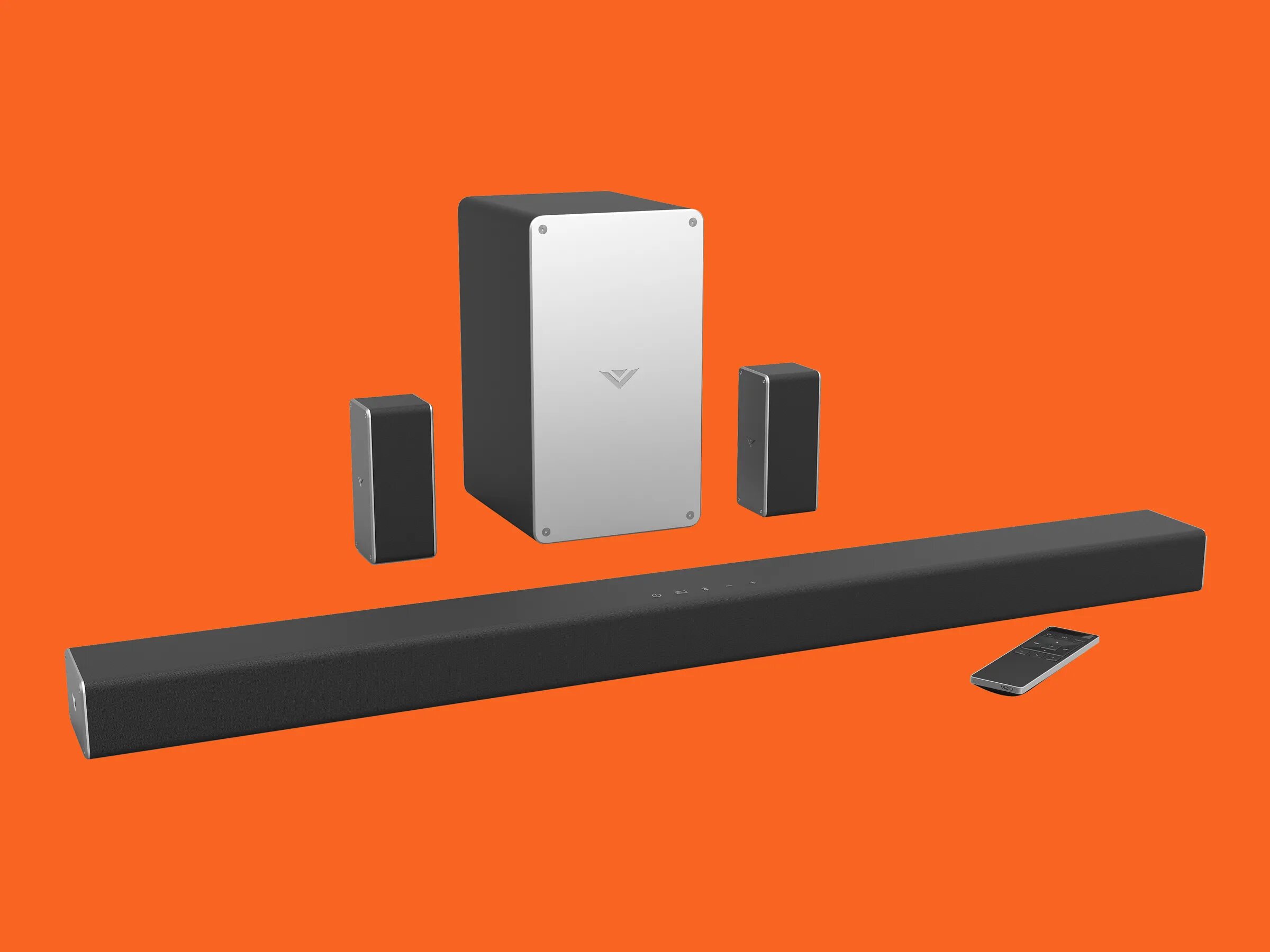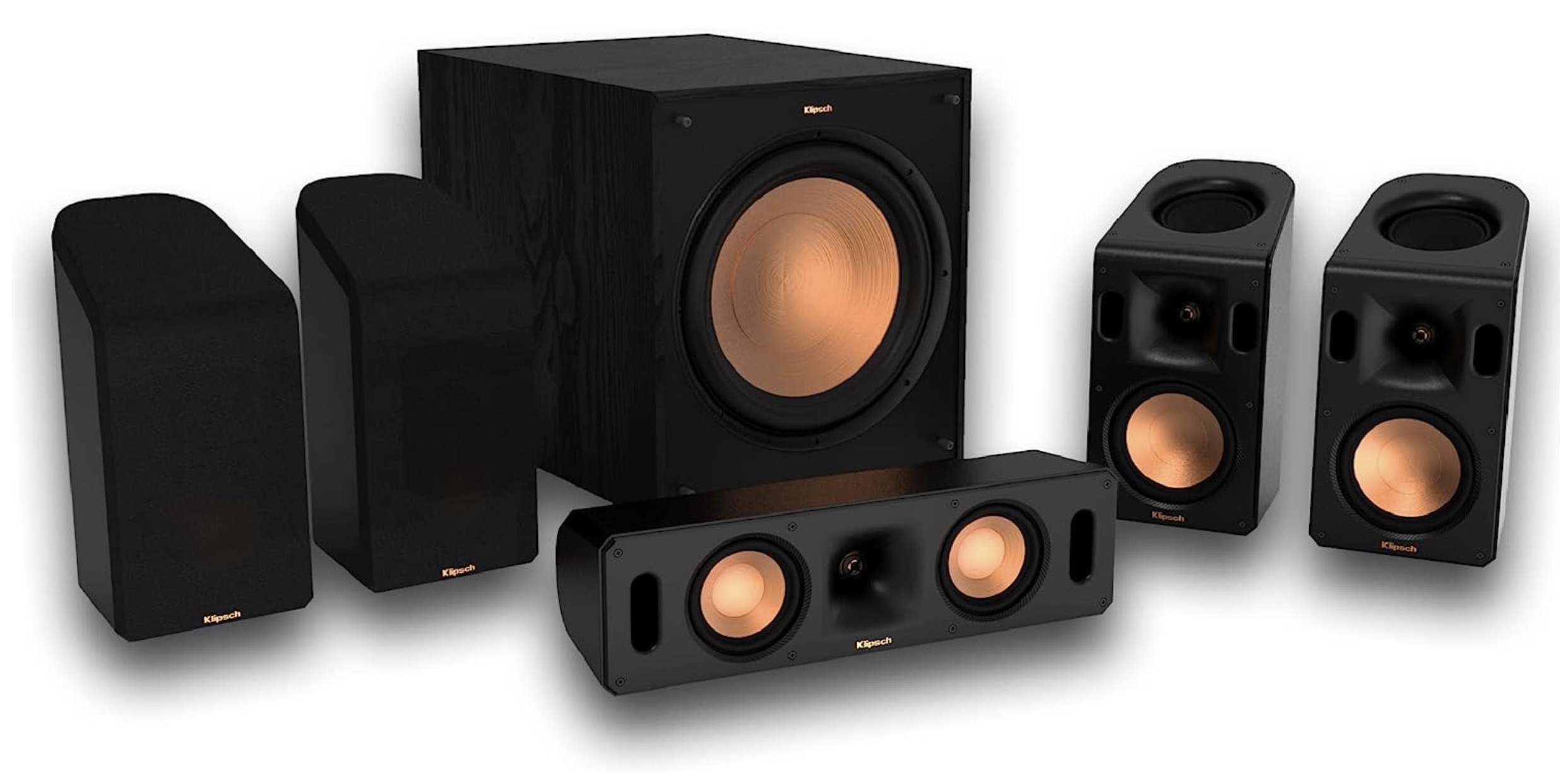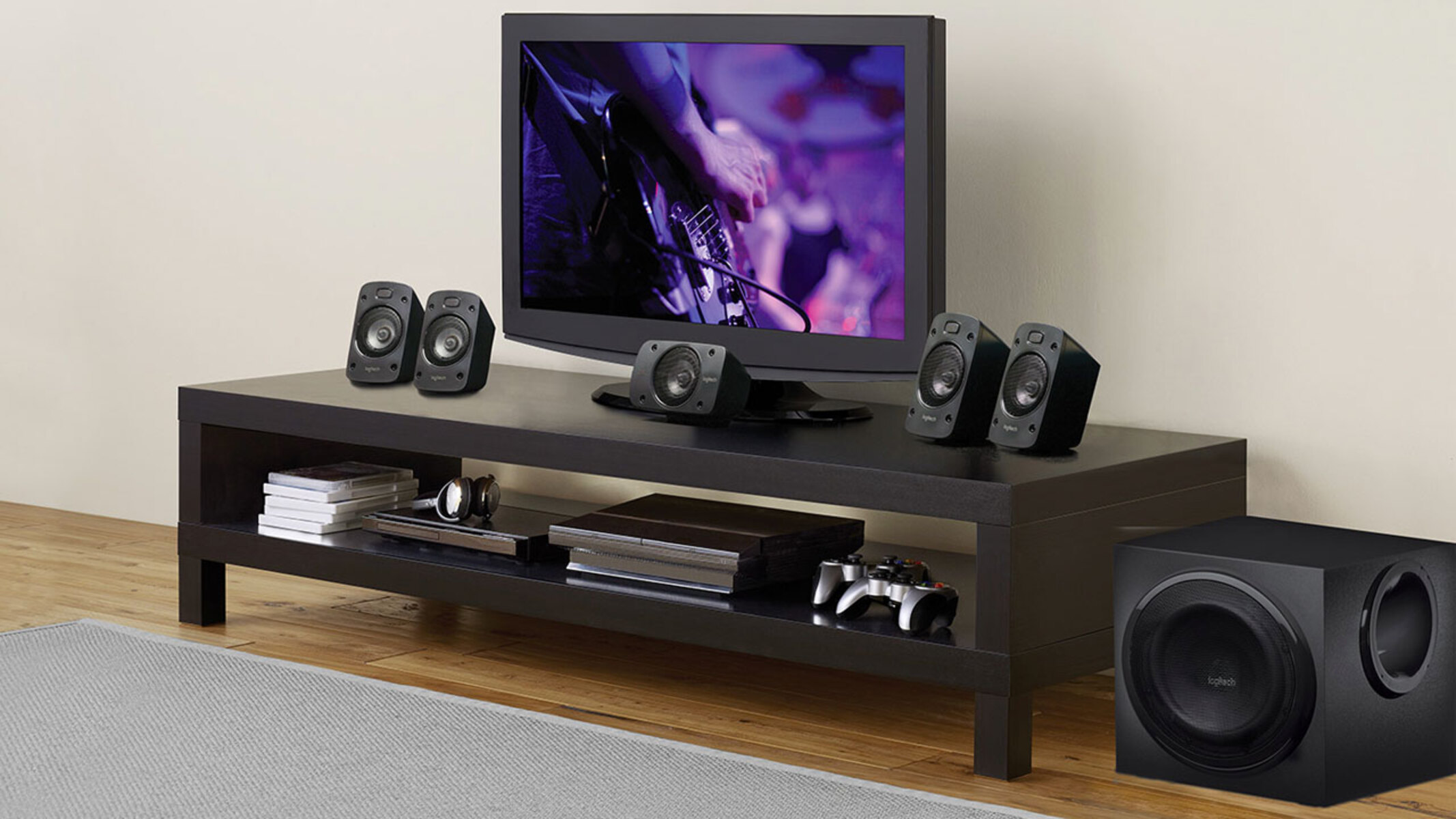Introduction
Welcome to the wonderful world of surround sound systems! Nothing quite compares to the immersive audio experience that these systems provide. With the right placement of speakers, you can transform your living room, home theater, or gaming den into a captivating audio oasis.
Surround sound systems consist of multiple speakers strategically positioned to create a three-dimensional soundstage. This setup allows you to hear sounds coming from different directions, enhancing your audio experience and making you feel like you’re right in the middle of the action.
In this article, we will explore the importance of speaker placement in a surround sound system and provide you with valuable tips on where to position your speakers for maximum impact. Whether you’re a movie enthusiast, audiophile, or a casual music lover, understanding proper speaker placement is essential to fully enjoy the rich and immersive audio experience.
Before we dive into the specifics of speaker placement, let’s briefly discuss the main components of a surround sound system. These typically include:
- Front Left and Front Right Speakers: These speakers are responsible for reproducing the main audio content, including dialogue and most of the sound effects.
- Center Channel Speaker: Placed above or below the television screen, it primarily handles dialogue and helps anchor the sound to the on-screen action.
- Surround Left and Surround Right Speakers: These speakers create ambient sound effects, immersing you in a realistic sound field and enhancing the sense of depth and movement.
- Subwoofer: Responsible for delivering deep bass frequencies, the subwoofer adds impact and realism to explosions, musical scores, and low-frequency effects.
With these components in mind, let’s explore the art of speaker placement and uncover the secrets to achieving optimal audio quality and immersion in your surround sound system.
Main Components of a Surround Sound System
A surround sound system is composed of several key components that work together to create a captivating audio experience. Understanding these components and their functions is crucial to setting up your system correctly. Let’s take a closer look at each one:
1. Front Left and Front Right Speakers: These speakers play a vital role in reproducing the primary audio content. Placed on either side of your TV or projection screen, they handle dialogue, music, and most of the sound effects. These speakers are responsible for creating a well-defined soundstage and ensuring clear and distinct audio imaging.
2. Center Channel Speaker: The center channel speaker is typically positioned above or below your television screen. It is specially designed to handle dialogue and anchor the sound to the on-screen action. Since most movie scenes involve characters speaking, the center channel speaker plays a crucial role in delivering clear and intelligible dialogue. It also helps create a seamless transition as sound moves from left to right across the front soundstage.
3. Surround Left and Surround Right Speakers: These speakers are responsible for creating a sense of ambient sound and immersing you in a realistic sonic environment. Placed to the sides or slightly behind your listening area, they deliver sound effects, background noises, and off-screen action. These speakers add depth and dimension to your audio, making you feel more engaged with the content you’re experiencing.
4. Subwoofer: The subwoofer is a dedicated speaker designed to reproduce deep bass frequencies. It adds impact and realism to explosions, musical scores, and other low-frequency effects. A properly placed subwoofer can enhance the overall listening experience by delivering that rumbling sensation you feel during intense action scenes or thunderous musical moments. The low-frequency effects produced by the subwoofer provide a thrilling and immersive audio experience.
When setting up your surround sound system, it is essential to consider how these components work together to create a cohesive and enveloping audio environment. Each speaker has a specific role in the overall sound reproduction, and properly positioning them will ensure that you experience the intended audio effects as intended by the content creators.
Now that we understand the main components of a surround sound system, let’s delve into the importance of speaker placement and how it can significantly impact your audio experience.
Understanding Speaker Placement
Speaker placement is a crucial aspect of setting up a surround sound system. It determines how the audio signals are dispersed throughout the room and ensures an accurate and immersive sound experience. Proper speaker placement can enhance the imaging, depth, and overall balance of the audio, making your favorite movies, music, and games come to life.
One fundamental principle to understand is that sound travels in waves and interacts with the physical environment. The shape and layout of your room, furniture placement, and even the type of flooring can affect how sound is dispersed and perceived. With this in mind, let’s explore some key factors to consider when positioning your speakers:
1. Room Acoustics: The acoustic properties of your room play a significant role in the overall sound quality. Hard surfaces like walls, floors, and ceilings can cause sound reflections, leading to echo and a loss of clarity. Soft materials like curtains, carpets, and furniture can help absorb some of these reflections, reducing acoustic issues. Understanding the acoustic characteristics of your room will guide speaker placement decisions and help maximize the audio performance.
2. Listening Position: The placement of your speakers should be optimized for your primary listening position. Consider the distance between the speakers and the listening area, as well as the angle at which they are positioned. The goal is to create a sweet spot where you can experience balanced audio imaging and depth. Experiment with speaker placement and seating position adjustments to find the optimal setup for your specific room and seating arrangement.
3. Symmetry and Balance: It is generally advisable to maintain symmetry in your speaker placement. This means ensuring that the left and right speakers are equidistant from the center of your listening area. This symmetry helps achieve a balanced soundstage and accurate audio localization. Additionally, make sure the speakers are positioned at ear level or slightly angled towards the listening position for optimal performance.
4. Distance from Walls: The distance between the speakers and the walls can significantly impact the sound quality. Placing the speakers too close to the walls can result in boomy and exaggerated bass, while positioning them too far away can lead to a loss of low-frequency impact. Experiment with the distance from the walls, considering the specific characteristics of your speakers and room, to find the right balance and ensure optimal audio performance.
5. Subwoofer Placement: The subwoofer is more forgiving in terms of placement compared to other speakers. The low-frequency soundwaves produced by the subwoofer are non-directional, meaning they can originate from different locations without affecting the audio experience significantly. Experiment with subwoofer placement to achieve the desired bass impact while considering room layout and personal preferences.
By understanding these key factors and experimenting with speaker placement, you can fine-tune your surround sound system to achieve outstanding audio performance. Remember that every room is unique, so don’t be afraid to make adjustments and find the setup that works best for your specific environment.
Key Factors in Speaker Placement
When it comes to speaker placement in a surround sound system, several key factors need to be considered to optimize audio performance and deliver an immersive experience. By understanding these factors, you can ensure that your speakers are positioned correctly for maximum impact. Let’s explore some of the essential considerations:
1. Angle and Directionality: The angle and direction of your speakers can greatly affect the sound dispersion and imaging. Speakers should be directed towards the primary listening position, creating a focused soundstage. The front speakers, including the left, right, and center channels, should be pointing directly at the listener, while the surround speakers should be positioned to the sides or slightly behind. This setup helps create an enveloping sound experience, enhancing immersion.
2. Distance from the Listening Position: The distance between your speakers and the primary listening position plays a critical role in achieving a balanced and realistic soundstage. Ideally, the front speakers should be equidistant from the listening position. Additionally, consider the recommended distance guidelines provided by the speaker manufacturer to achieve optimal audio performance. Adjusting the distance may impact the imaging and perceived depth, so experimentation is key.
3. Height Placement: For an enhanced surround sound experience, consider incorporating height speakers or Dolby Atmos-enabled speakers. These speakers create a vertical dimension to the sound, delivering overhead effects and a more immersive audio experience. Height speakers should ideally be placed above the front left and right speakers or mounted on the ceiling. Ensure that they are angled downwards towards the listening position, enabling accurate sound localization.
4. Room Reflections: Sound reflections can significantly impact the audio quality in your listening space. Hard surfaces, such as bare walls and floors, can cause sound waves to bounce around the room, resulting in echo and loss of clarity. To minimize these reflections, consider using acoustic treatments such as wall panels, diffusers, or acoustic curtains. These materials can absorb excess sound energy and improve the overall sound quality, allowing your speakers to perform optimally.
5. Speaker Height: Positioning your speakers at the appropriate height is essential for achieving accurate sound reproduction. The front speakers should ideally be placed at ear level when seated. For the center channel speaker, it should be positioned either above or below the TV screen, ensuring that the sound is anchored to the on-screen action. Surround speakers should be placed slightly above ear level, at a height that complements the seating arrangement and provides an optimal surround sound experience.
By considering these key factors in speaker placement, you can fine-tune your surround sound system to deliver a truly immersive audio experience. Experimentation, along with careful attention to room acoustics and speaker positioning, will help you achieve the best possible sound quality and enjoyment from your system.
Front Left and Front Right Speakers
The front left and front right speakers are the foundation of your surround sound system. Positioned on either side of the television or projection screen, these speakers play a critical role in reproducing the main audio content, including dialogue, music, and most of the sound effects. Proper placement and alignment of these speakers are essential for achieving accurate sound imaging and a balanced soundstage.
Here are some key considerations when positioning the front left and front right speakers:
1. Positioning: These speakers should be placed at equal distances from the center of the TV screen to achieve proper stereo imaging. Ideally, they should be positioned slightly away from the wall, allowing the sound to propagate freely and minimizing the potential for reflections. Placing them too close to the wall can result in a boomy bass response, so finding the right balance is crucial.
2. Angle and Directionality: The front speakers should be angled towards the primary listening position, typically forming a 30 to 45-degree angle. This angle helps direct the sound towards the listener, creating a focused soundstage and enhancing the stereo imaging. Ensuring that the speakers are pointing directly at the listening position enhances the clarity and accuracy of the audio reproduction.
3. Level and Height Adjustment: Position the front speakers at an appropriate height for optimal sound projection and integration with other speakers in the system. The tweeters, responsible for reproducing higher frequencies, should be at ear level when seated in the primary listening position. This ensures that the sound reaches the listener at the correct angle, establishing proper audio localization and soundstage depth.
4. Size and Power: Consider the size and power of the front speakers in relation to the size of your room. Larger rooms may require larger speakers with higher power handling capabilities to fill the space with sound effectively. Conversely, smaller rooms may benefit from compact speakers that provide a good balance between size and performance. Ensure that the front speakers are capable of reproducing the full frequency range, providing a well-rounded sound experience.
5. Timbre Matching: Timbre matching refers to maintaining consistent tonal characteristics across all speakers in the system. It is important to choose front speakers that match the tonal quality of the other speakers, such as the center channel and surround speakers. This ensures a cohesive and seamless audio experience as sound transitions across the speakers, allowing for a more realistic and immersive surround sound environment.
By paying careful attention to the positioning, alignment, and characteristics of your front left and front right speakers, you can create a solid foundation for your surround sound system. The proper placement of these speakers is crucial for accurate imaging, vibrant sound reproduction, and an immersive audio experience that truly brings your movies, music, and games to life.
Center Channel Speaker
The center channel speaker is a crucial component of a surround sound system. Positioned above or below the television screen, it serves a specific purpose in reproducing dialogue and anchoring the sound to the on-screen action. A properly placed and calibrated center channel speaker enhances the clarity and intelligibility of dialogue, ensuring a cohesive and immersive audio experience.
Here are some key considerations when it comes to the center channel speaker:
1. Positioning: The center channel speaker should ideally be placed directly above or below the TV screen. This placement helps to align the dialogue with the on-screen actors, ensuring that their voices come from the correct visual source. If your TV is wall-mounted, consider using a wall-mount bracket specifically designed for center channel speakers to ensure optimal placement.
2. Alignment: Aligning the center channel speaker with the front left and front right speakers is crucial for achieving accurate sound imaging and a seamless transition as sound moves across the front soundstage. The center channel speaker should be positioned at the same height as the front left and front right speakers, maintaining a consistent sound projection and creating a cohesive audio image.
3. Timbre Matching: Timbre matching refers to achieving tonal consistency across all speakers in the system. It is essential to select a center channel speaker that matches the tonal characteristics of the front left and front right speakers. This ensures a smooth and seamless transition of sound as it moves from one speaker to another. Timbre matching helps create a cohesive and realistic audio experience, preserving the integrity of the original soundtrack.
4. Level Adjustment: The center channel speaker should be set at an appropriate volume level that allows dialogue to be clear without overpowering the other speakers in the system. Make sure to calibrate the center channel speaker to achieve a balanced soundstage. This can be done through the receiver’s speaker setup menu or using an audio calibration tool. Proper level adjustment ensures that dialogue is intelligible and well-balanced with the other audio elements.
5. Acoustic Treatment: Depending on your room acoustics, you may consider using acoustic treatments such as diffusers or absorption panels around the center channel speaker. These treatments help minimize unwanted reflections and improve the clarity and focus of the dialogue. Experimenting with different setups and adjusting the acoustic treatments can fine-tune the performance of your center channel speaker and enhance the overall sound quality.
By paying attention to the positioning, alignment, and calibration of the center channel speaker, you can ensure that dialogue remains clear and intelligible, anchoring the sound to the on-screen action. A properly placed center channel speaker enhances the overall coherence and immersive nature of your surround sound system, allowing you to fully enjoy movies, TV shows, and other audio-visual content.
Surround Left and Surround Right Speakers
The surround left and surround right speakers play a crucial role in a surround sound system, creating an immersive and enveloping audio experience. Positioned to the sides or slightly behind the listening area, these speakers are responsible for delivering ambient sound effects, background noise, and off-screen action. Proper placement and calibration of the surround speakers are essential to achieve accurate sound localization and a realistic sense of depth and movement.
Here are some key considerations when it comes to the surround left and surround right speakers:
1. Positioning: The surround speakers should be placed to the sides of the primary listening position, slightly above ear level. The goal is to create an immersive sound environment that complements the on-screen action and enhances the sense of depth. Ideally, the distance between the listener and the surround speakers should be roughly equal to the distance between the listener and the front speakers.
2. Angle and Directionality: The surround speakers should be angled towards the listener, directing the soundwaves to create a spacious and enveloping audio experience. Aim for a 90 to 110-degree angle from the listening position, ensuring that the sound is dispersed around the room rather than directly at the listener. This setup enhances the sense of immersion and creates a realistic soundfield.
3. Calibration and Balance: It is crucial to ensure that the surround speakers are appropriately calibrated and balanced with the other speakers in the system. The volume level should create a seamless transition from the front speakers, providing a balanced audio experience. Calibration can be done through the receiver’s speaker setup menu or using an audio calibration tool. Balancing the surround speakers with the rest of the system creates a cohesive soundstage and enhances the overall immersion.
4. Room Acoustics: Consider the acoustics of the room when positioning the surround speakers. Reflective surfaces can impact the sound quality and cause unwanted reflections or echo. You may want to experiment with acoustic treatment options like diffusers, absorbers, or even placing furniture strategically to help minimize reflections and improve the overall sound quality of the surround speakers.
5. Speaker Size and Placement Options: The size of the surround speakers will depend on the size of your room and personal preferences. Smaller rooms might benefit from compact surround speakers, while larger rooms may accommodate larger speakers for greater impact. Additionally, you can explore different placement options, such as wall-mounting or using stands, to find the setup that works best for your space and delivers optimal surround sound performance.
Proper placement and calibration of the surround left and surround right speakers are essential for creating a truly immersive surround sound experience. By considering the positioning, angle, calibration, and room acoustics, you can achieve accurate sound localization, enhanced depth, and a captivating audio environment that brings movies, music, and games to life.
Subwoofer Placement
The subwoofer is a vital component of a surround sound system that adds depth and impact to your audio experience by reproducing low-frequency sounds. Proper subwoofer placement can significantly impact the overall sound quality, bass response, and immersion. While the subwoofer is relatively flexible in terms of placement compared to other speakers, there are still some key considerations to keep in mind:
1. Corner Placement: One common placement for a subwoofer is in a corner of the room. This position takes advantage of the natural room acoustics, as the corner helps amplify the bass response, resulting in a fuller and richer sound. Experiment with placing the subwoofer in different corners of the room to find the spot that provides the most balanced and even bass distribution.
2. Center Placement: Another option is placing the subwoofer near the front of the room, often in the center. This placement can provide a more even bass response throughout the room, as the subwoofer is equidistant from the walls and furniture that may cause reflections and interfere with the bass output. Center placement can help maintain a balanced and consistent bass experience across different listening positions.
3. Room Size and Acoustics: The size and acoustics of your room should also be considered when placing the subwoofer. In smaller rooms, placing the subwoofer near a wall or corner can help maximize the bass impact. However, in larger rooms, you may need to experiment with different placements to achieve a balanced bass response. Consider using acoustic treatments, such as bass traps or diffusers, to minimize unwanted reflections or bass build-up in specific areas of the room.
4. Distance from Walls and Furniture: The distance between the subwoofer and the surrounding walls or furniture can affect the bass response. Placing the subwoofer too close to walls or furniture can lead to exaggerated bass or unwanted vibrations. Experiment with adjusting the distance to find the sweet spot where the bass is well-balanced and integrated with the other speakers in the system.
5. Phase and Level Adjustment: Once you have determined the placement of the subwoofer, it is important to calibrate the phase and level settings to achieve optimal performance. Use the receiver’s speaker setup menu or the subwoofer’s built-in controls to adjust the phase to ensure that the bass aligns properly with the main speakers. Additionally, adjust the subwoofer’s volume level to blend well with the overall sound balance, without overpowering or overshadowing the rest of the audio.
Remember, every room is unique, and the ideal subwoofer placement may vary depending on the specific characteristics of your space. Take the time to experiment with different positions and settings to find the placement that delivers the best bass response and enhances the overall audio experience in your surround sound system.
Additional Tips for Speaker Placement
While the specific placement of your speakers will depend on the layout and characteristics of your room, there are some additional tips you can follow to optimize the performance and maximize the enjoyment of your surround sound system:
1. Avoid Obstructions: Ensure that there are no large obstructions, such as furniture or plants, blocking the path between the speakers and the listening area. These obstructions can interfere with the sound dispersion and cause reflections, affecting the overall sound quality and imaging. Clear the space around the speakers to allow for unobstructed sound propagation.
2. Experiment with Speaker Angles: Don’t be afraid to experiment with speaker angles to achieve the desired soundstage and audio imaging. Slight adjustments in the angle of the speakers can significantly impact the sound dispersion and the overall listening experience. Take the time to fine-tune the angles to find the positioning that provides the best sound balance and immersion.
3. Optimize Speaker Height: If possible, position your surround sound speakers at or slightly above ear level when seated in the primary listening area. This helps ensure that the sound reaches your ears at the correct angle and enhances the accuracy of the audio localization. Adjusting the speaker height can have a noticeable impact on the overall soundstage and create a more immersive listening experience.
4. Consider Speaker Isolation: Vibrations from speakers can transfer to surfaces, such as shelves or stands, which can affect the clarity of the audio. Consider using isolation pads or stands designed to minimize vibrations and prevent resonance. These isolation solutions can improve the overall sound quality by reducing unwanted vibrations and enhancing the speaker’s performance.
5. Use Speaker Calibration Tools: Many AV receivers come equipped with speaker calibration tools that can optimize the performance of your speakers. These tools analyze the room acoustics and speaker characteristics and make automatic adjustments to ensure accurate sound reproduction. Take advantage of these tools to improve the overall audio balance and alignment of your surround sound system.
6. Regularly Evaluate and Adjust: As your room layout, furniture arrangement, or personal preferences change, it is essential to regularly evaluate and adjust your speaker placement. Pay attention to any changes in the sound quality or imaging and experiment with different configurations if necessary. Regularly fine-tuning your speaker placement ensures that you continue to achieve the optimal audio experience.
By following these additional tips for speaker placement, you can further enhance the performance and enjoyment of your surround sound system. Remember, finding the perfect placement may involve some trial and error, so take the time to experiment and fine-tune the positioning to achieve the best audio immersion and accuracy.
Conclusion
Speaker placement is a critical aspect of creating an immersive and high-quality surround sound experience. By understanding the main components of a surround sound system and considering factors such as room acoustics, speaker angles, distance from walls, and calibration, you can optimize the positioning of your speakers to achieve accurate sound imaging, depth, and a balanced soundstage.
From the front left and front right speakers that carry the main audio content to the center channel speaker that anchors the dialogue, each speaker serves a specific purpose in recreating a lifelike audio environment. The surround left and surround right speakers envelop you in ambient sound and off-screen action, while the subwoofer adds depth and impact with its low-frequency capabilities.
Remember that every room is unique, and finding the optimal speaker placement requires experimentation and adjustment. Pay attention to room acoustics, timbre matching, and the positioning of your listening area to ensure an immersive audio experience that enhances your enjoyment of movies, music, and games.
By implementing the additional tips provided, such as avoiding obstructions, optimizing speaker height, and using calibration tools, you can further refine the performance of your surround sound system. Regular evaluation and adjustment of your speaker placement will allow you to adapt to any changes in your room and preferences, ensuring you consistently achieve the best audio reproduction.
So take the time to fine-tune your speaker placement, experiment with different configurations, and create a surround sound system that transports you into a captivating audio oasis, enhancing your entertainment experiences and bringing your content to life.







